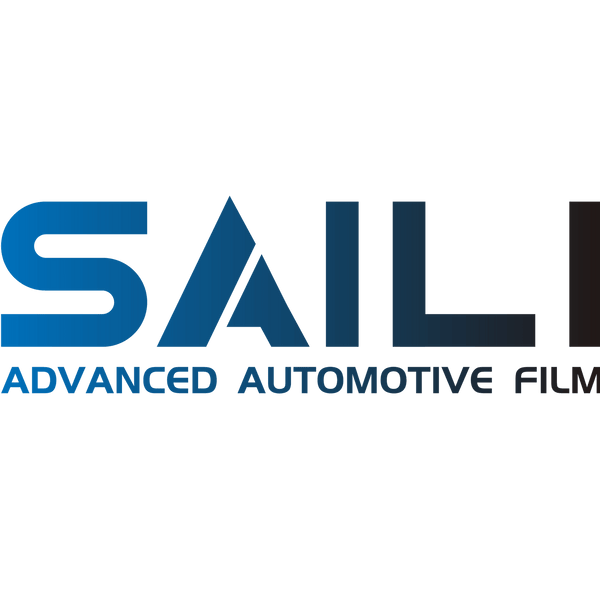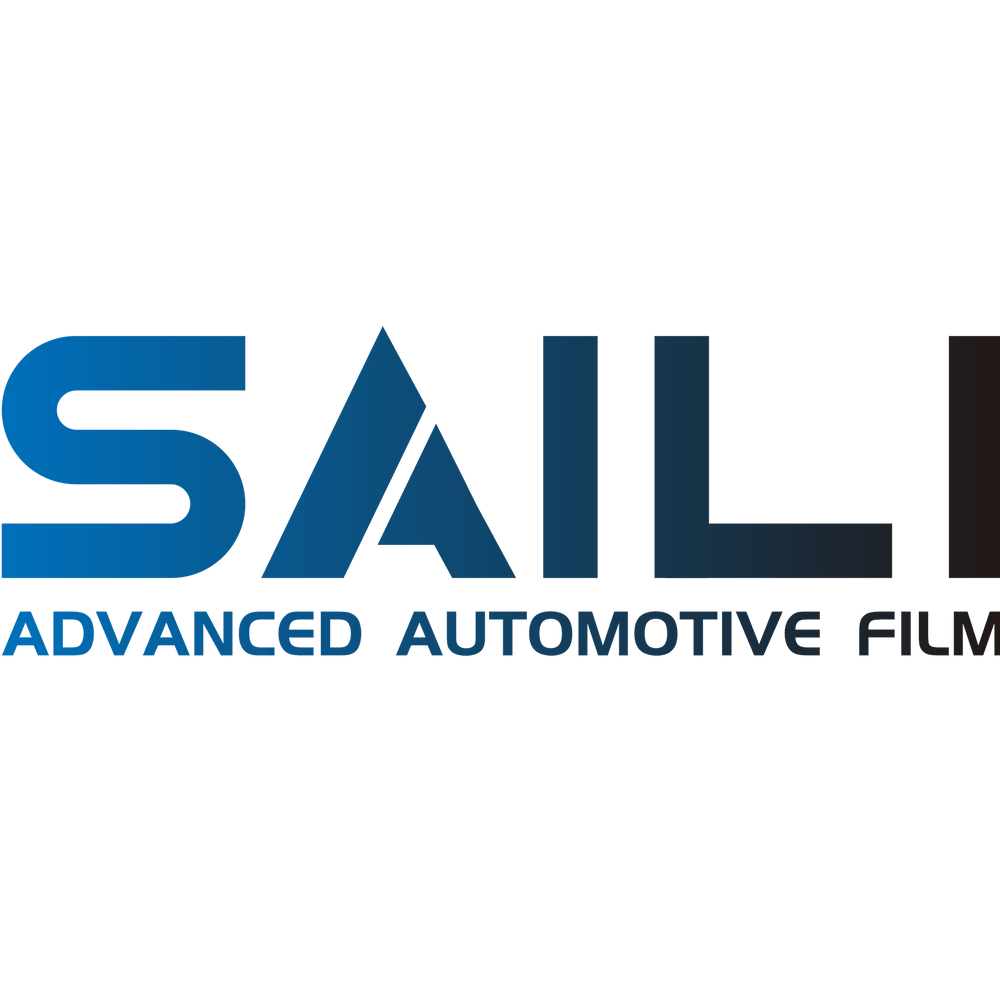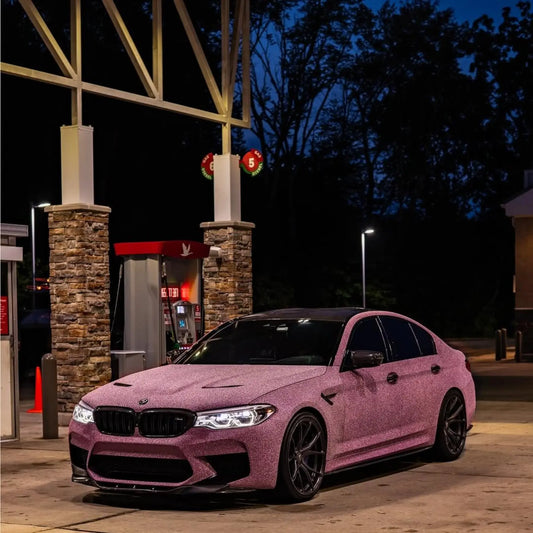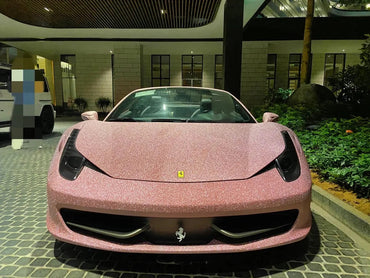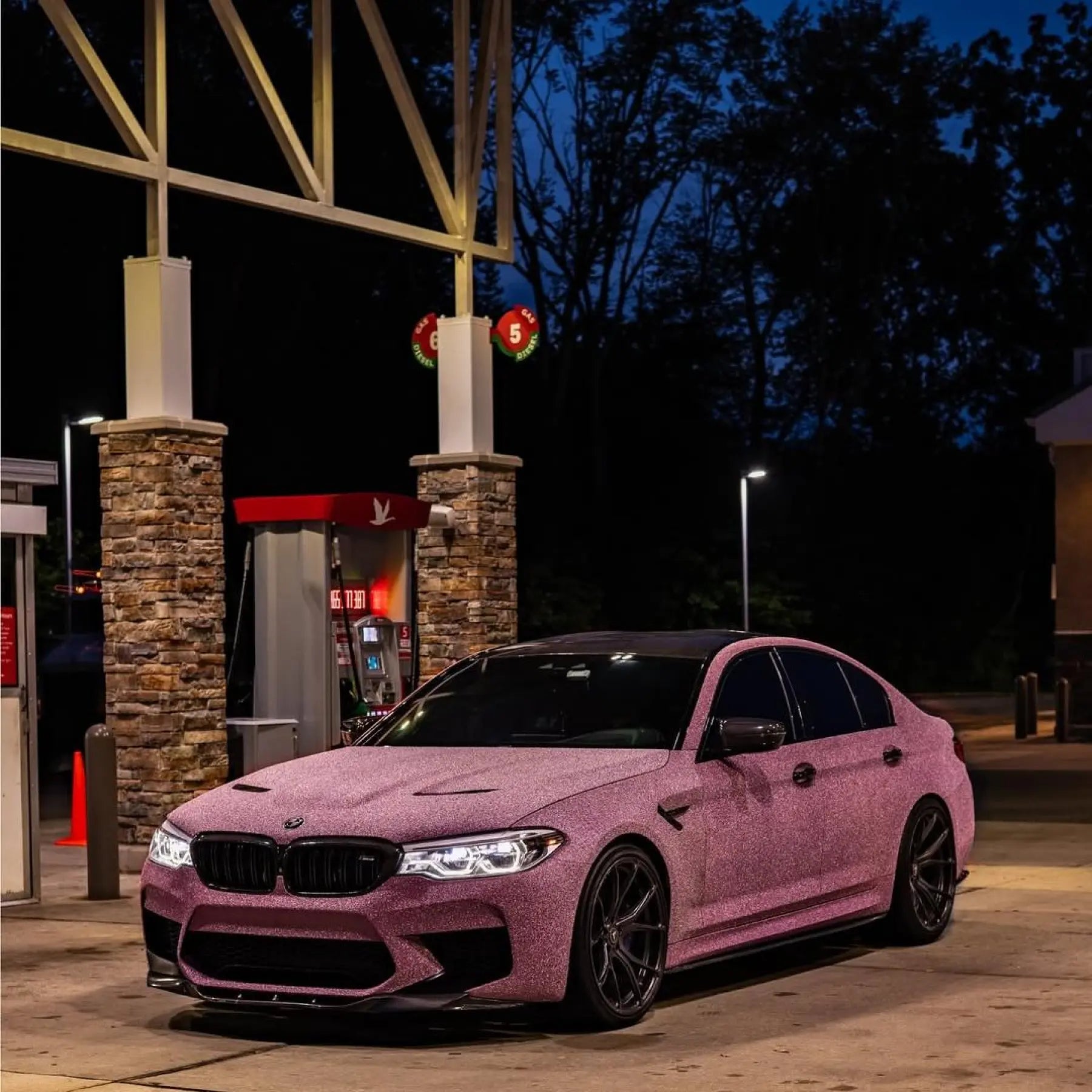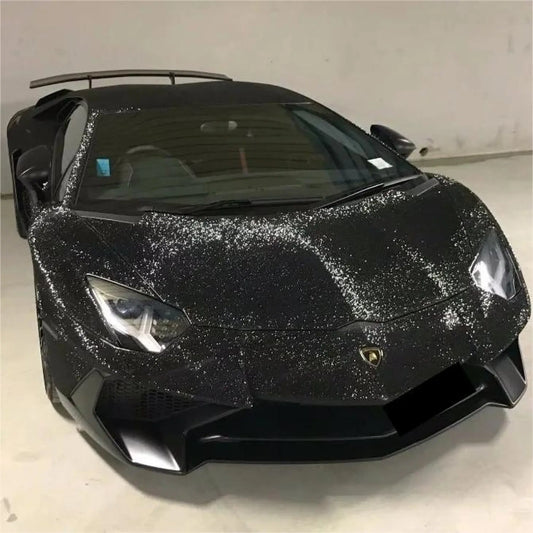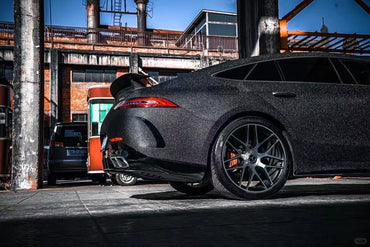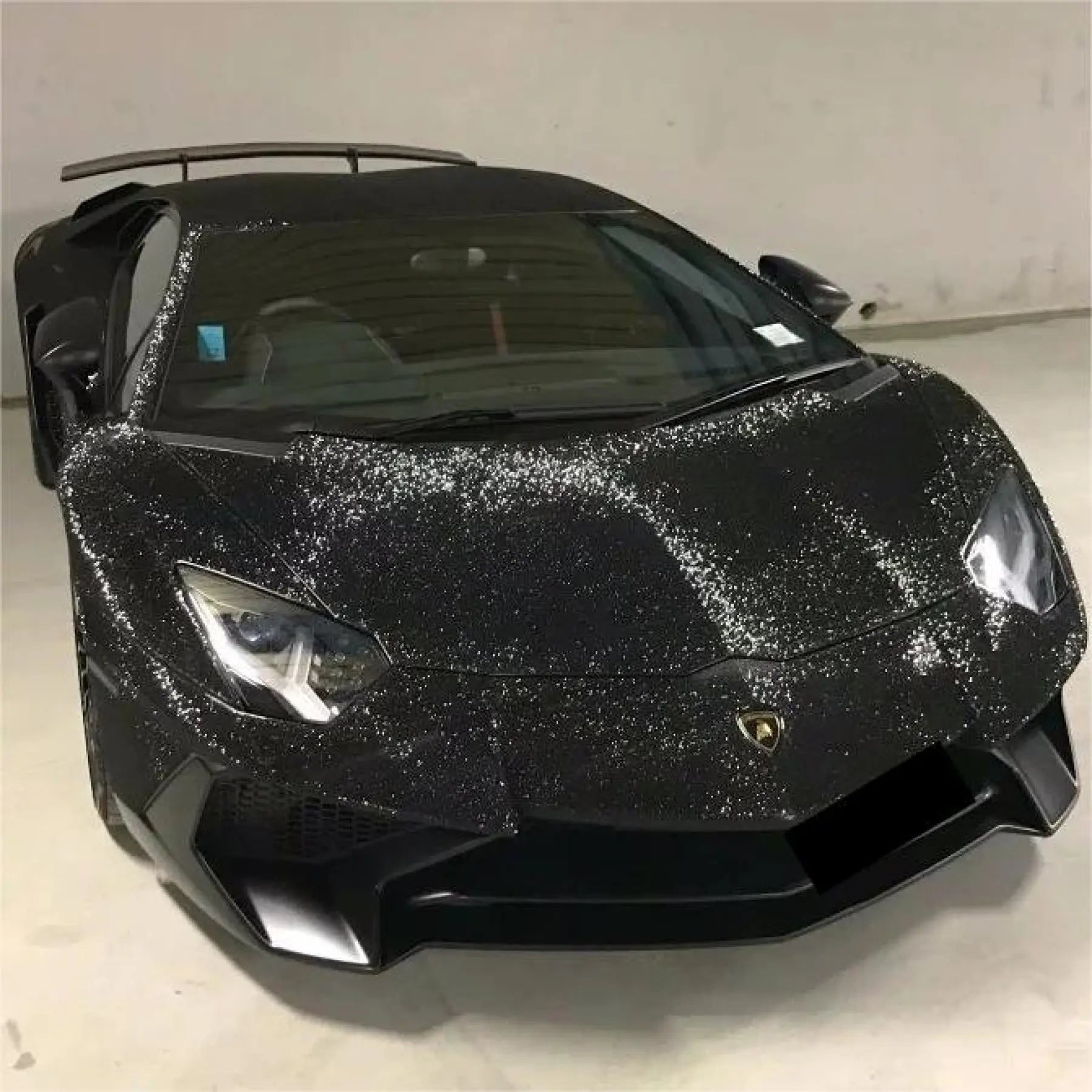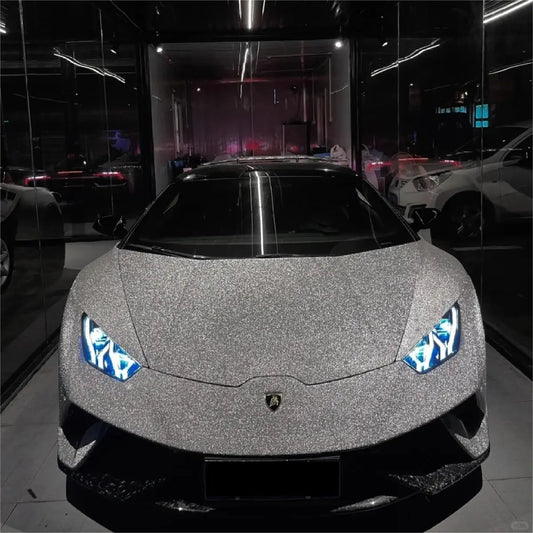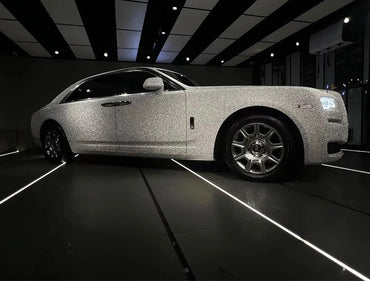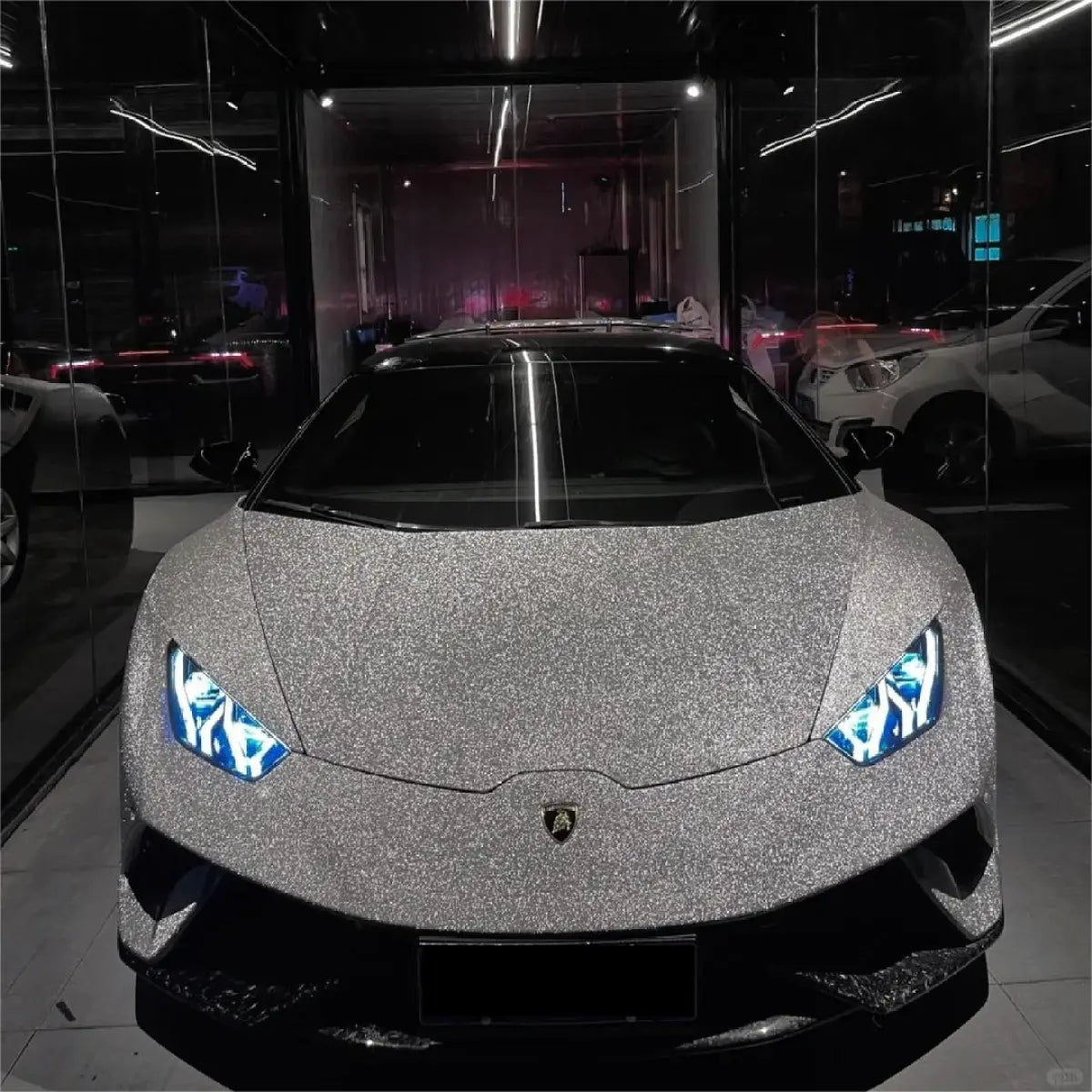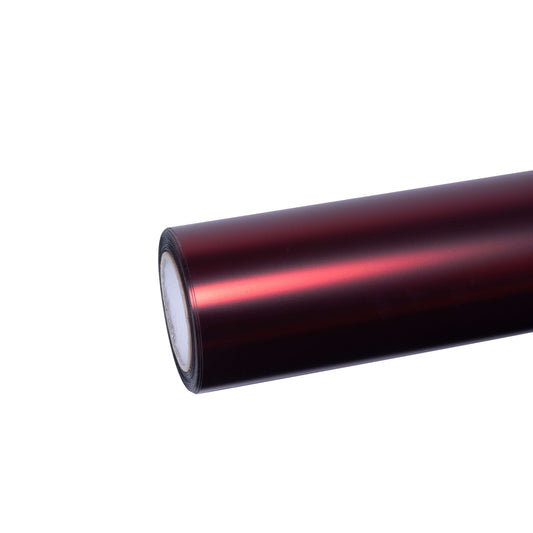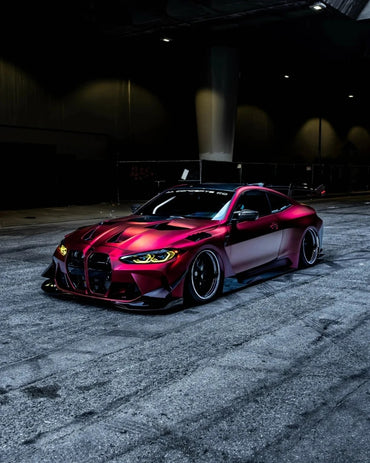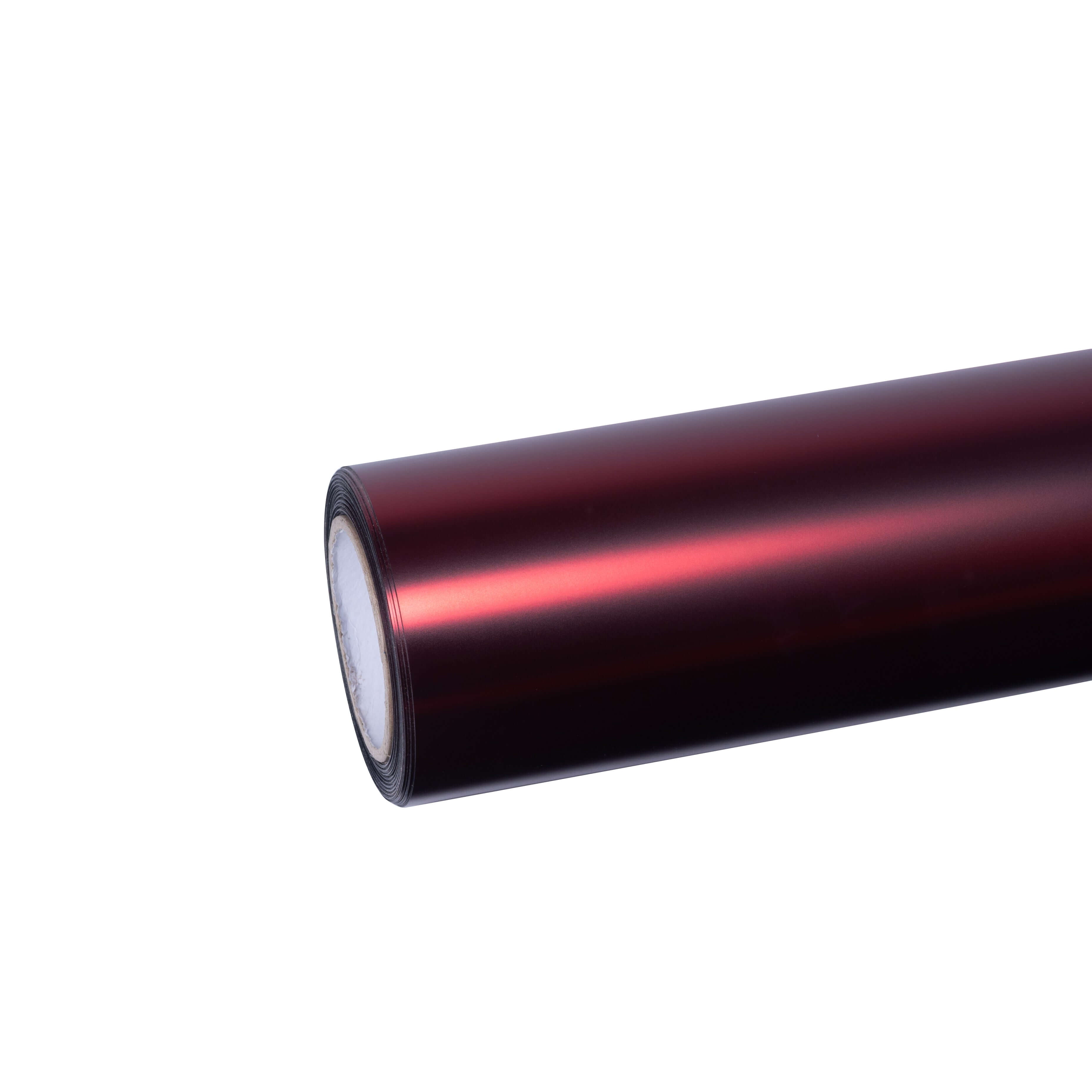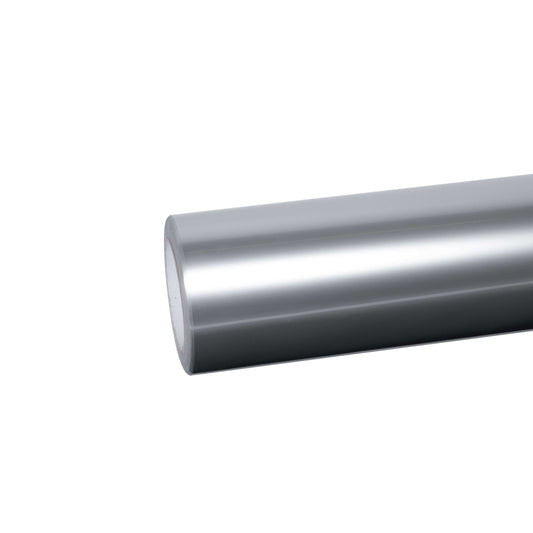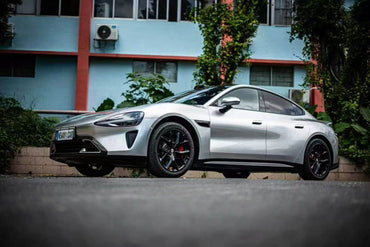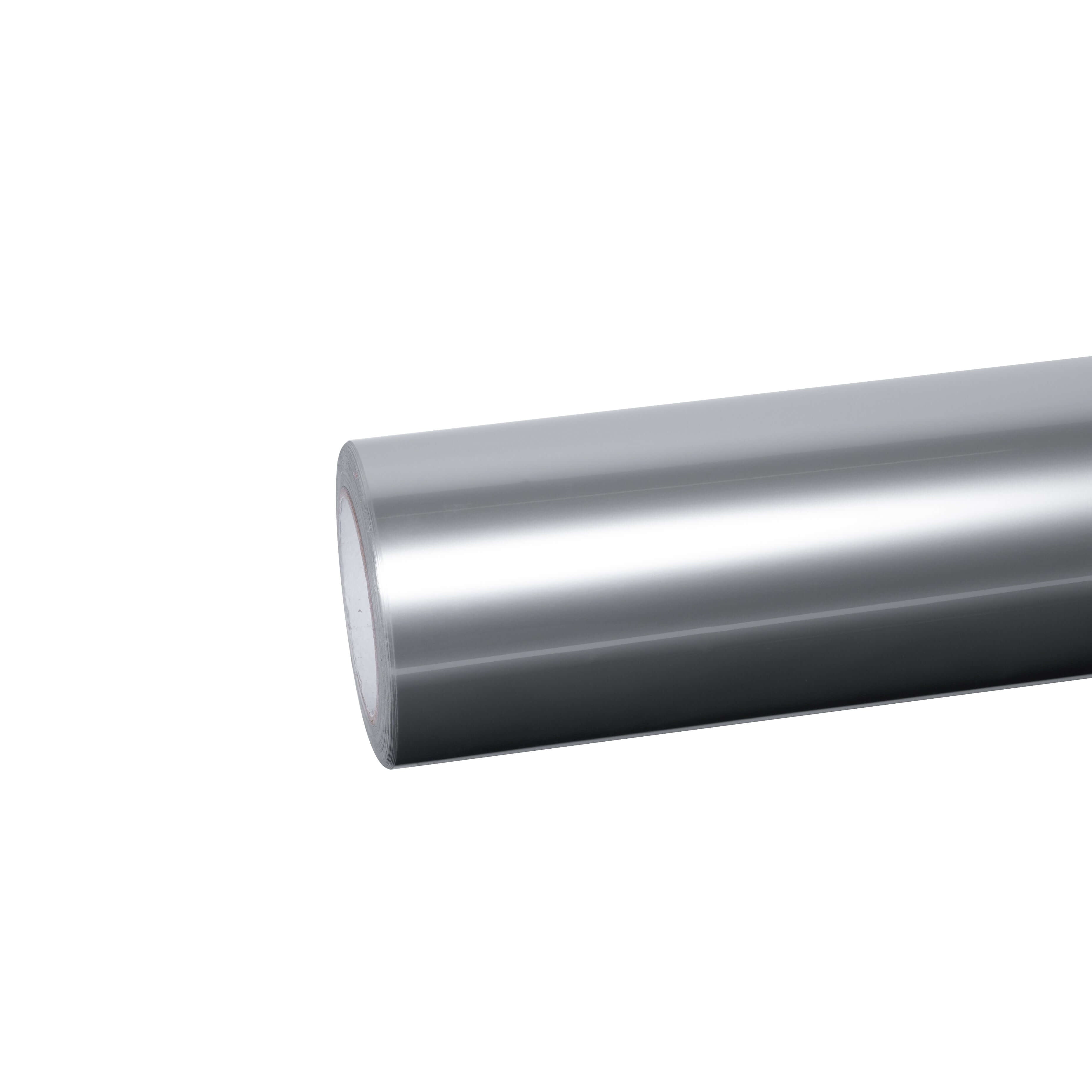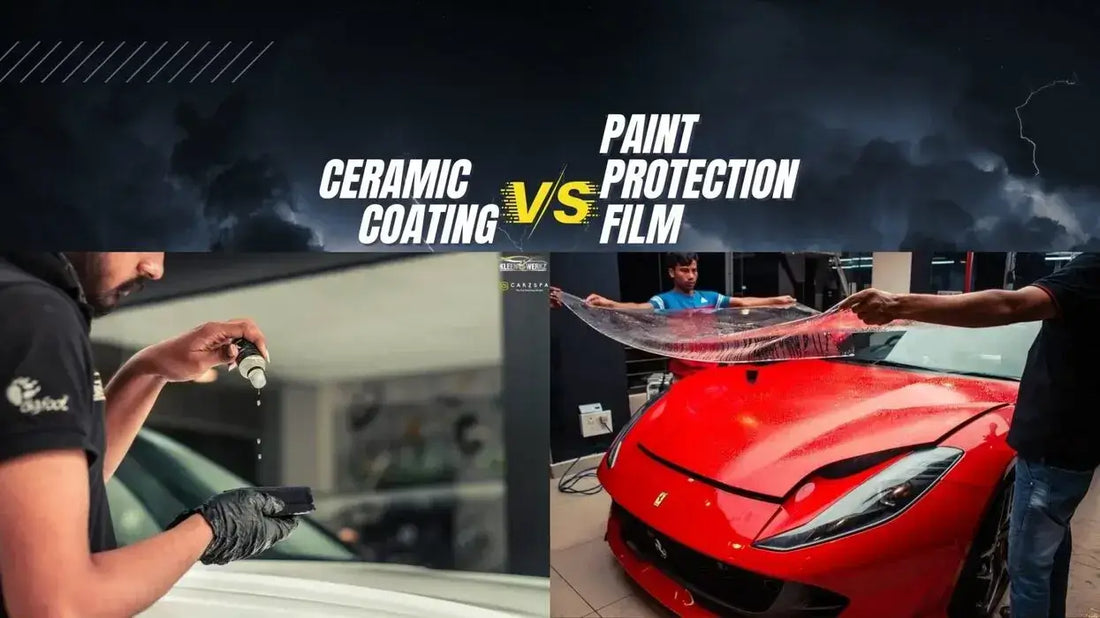When it comes to protecting your vehicle's paint, one question stands out: should you apply ceramic coating over paint protection film (PPF)? The answer is an emphatic yes. This strategic combination represents the pinnacle of automotive paint protection technology in 2025, offering vehicle owners an unbeatable dual-layer defense system.
Your car faces constant threats—rock chips from highways, UV damage from constant sun exposure, chemical contaminants from environmental pollution, and corrosive substances like bird droppings and tree sap. While paint protection film (PPF) excels at defending against physical impacts, and ceramic coatings provide hydrophobic benefits and enhanced gloss, combining both creates a comprehensive protective shield that professional detailers worldwide recommend as the gold standard for vehicle preservation.
Understanding Paint Protection Film (PPF): The Foundation
Before applying ceramic coating over PPF, it's essential to understand what PPF does and why it forms the perfect base layer for additional ceramic protection.
What is Paint Protection Film?
Paint Protection Film, commonly called "clear bra," is a transparent thermoplastic urethane film developed originally by the military to protect helicopter rotor blades from shrapnel and debris. Today's PPF is a sophisticated multi-layered system designed to absorb physical impacts and prevent damage to your vehicle's factory paint.
Sailifilm's TPU paint protection wraps exemplify modern PPF technology, offering professional-grade protection that shields against:
- Rock chips and road debris impact
- Scratches and swirl marks
- Bug splatter and insect damage
- Bird droppings and tree sap corrosion
- Chemical stains from harsh environmental contaminants
- UV radiation and oxidation damage
Why PPF Needs Ceramic Coating Protection
While PPF is incredibly durable and typically lasts 5-10 years, it still faces challenges:
- UV Sensitivity: Prolonged sun exposure can cause yellowing and fading over time
- Surface Contaminants: Sticky substances like tree sap, road tar, and bird droppings can deteriorate PPF edges
- Water Spotting: Hard water deposits can embed into PPF if not properly maintained
- Limited Chemical Resistance: PPF alone doesn't provide robust defense against acidic rain or harsh chemicals
This is where ceramic coating becomes the perfect complement, creating a protective seal over your PPF investment.
Understanding Ceramic Coatings: The Enhancement Layer
Ceramic coatings are liquid polymers composed of silicon dioxide (SiO₂) or specialized nano-ceramic formulations that bond with surfaces to create a semi-permanent protective layer.
How Ceramic Coatings Work
When applied over PPF, ceramic coatings:
- Bond Chemically: Create a permanent molecular bond with the PPF's clear coat layer
- Hydrophobic Effect: Repel water, causing it to bead and roll off rather than sit on the surface
- UV Protection: Add an additional barrier against harmful ultraviolet radiation
- Self-Cleaning Properties: Reduce dirt and grime adhesion, making maintenance easier
- Enhanced Gloss: Create a deep, showroom-quality shine that PPF alone cannot achieve
The Winning Combination: Why PPF + Ceramic Coating Works
Applying ceramic coating over PPF isn't just beneficial—it's the industry-recommended best practice. Here's why this combination provides superior protection:
1. Double-Layer Physical Protection
The PPF provides the primary impact resistance, absorbing rock chips, scratches, and debris damage. The ceramic coating acts as a sacrificial secondary layer, taking environmental abuse while protecting the PPF underneath.
2. Enhanced Hydrophobic Properties
PPF has some water-repellency, but ceramic coatings dramatically enhance this. The result is a surface where water beads aggressively and rolls off, carrying contaminants with it. This reduces water spotting, mineral deposits, and makes washing dramatically easier.
3. Comprehensive Chemical Resistance
While PPF protects against physical damage, ceramic coatings excel at chemical resistance. Bird droppings, tree sap, road salt, and industrial fallout have difficulty damaging a ceramic-coated PPF surface. The coating acts as a shield, preventing acidic substances from etching into the film.
4. Extended PPF Longevity
By protecting PPF from UV damage, chemical etching, and environmental contaminants, ceramic coating effectively extends your PPF's lifespan. Many professionals report PPF lasting significantly longer when protected by ceramic coating.
5. Superior Aesthetic Appeal
PPF alone provides an optically clear finish but doesn't enhance gloss. Ceramic coating adds remarkable depth, reflectivity, and showroom shine that transforms your vehicle's appearance.
6. Easier Maintenance
The hydrophobic ceramic layer makes cleaning your vehicle dramatically simpler. Dirt, grime, and water slide off, reducing washing frequency and effort. This saves time and money on maintenance.
Step-by-Step: Applying Ceramic Coating Over PPF
Professional installation is always recommended, but understanding the proper process ensures quality results.
Step 1: Surface Preparation and Cleaning
Critical importance: Improper prep is the leading cause of ceramic coating adhesion failure.
- Wash your vehicle thoroughly with pH-neutral automotive shampoo to remove wax, sealants, and contaminants
- Use a clay bar to remove embedded contaminants from the PPF surface
- Dry completely with soft microfiber towels, avoiding lint or dust
- Inspect PPF for any damage, adhesive residues, or defects that need addressing
Step 2: PPF Inspection and Minor Correction
- Look for scratches, swirl marks, or adhesive residues on the PPF surface
- Use light polishing (with proper PPF-safe techniques) to remove minor imperfections
- Ensure the surface is completely smooth and free of debris before ceramic coating application
Step 3: Ceramic Coating Application
Professional-grade ceramic coatings require specific technique:
- Apply ceramic coating in sections using appropriate applicator pads
- Work in straight lines, overlapping each section by 50% for complete coverage
- Avoid applying too much coating—thin, even layers are more effective than thick applications
- Allow adequate flash-off time between coats (typically 10-30 minutes depending on product)
- Follow manufacturer cure times before exposing the vehicle to water
Step 4: Curing and Initial Maintenance
- Allow 48 hours minimum before any water contact (many products require up to 7 days)
- Avoid washing for the recommended timeframe
- Once cured, perform your first wash with pH-neutral soap and soft wash mitt
- Apply ceramic coating maintenance sealant as recommended by the product manufacturer
PPF Materials You Can Apply Ceramic Coating Over
Not all PPF is created equal when it comes to ceramic coating compatibility. The best candidates have clear top coats specifically designed for ceramic application.
Sailifilm offers colored paint protection film options that provide excellent ceramic coating compatibility, ensuring optimal adhesion and longevity of your protective system.
Compatible PPF Types:
- Premium self-healing PPF with clear top coats
- Ceramic-pre-coated PPF (which still benefits from additional ceramic enhancement)
- Gloss and matte PPF formulations
- Colored protective films for vinyl wraps
Important Note: Application Order
Always apply PPF first, then ceramic coating. Applying PPF over ceramic coating creates adhesion problems because ceramic coating creates a slick, hydrophobic surface that PPF film won't stick to properly. The correct sequence ensures maximum protection and longevity.
Ceramic Coating Benefits for PPF: The Complete Picture
Understanding specific benefits helps justify the investment:
UV Protection Enhancement
While PPF blocks UV rays, ceramic coating adds another protective layer, significantly reducing the risk of yellowing, fading, or discoloration over time. Your vehicle maintains its pristine appearance years longer.
Stain Resistance and Easy Removal
Contaminants like bird droppings, tree sap, and road tar have difficulty bonding to ceramic-coated surfaces. Most contaminants wash away with simple water rinsing, preventing permanent damage to your PPF.
Water Spot Prevention
Hard water minerals that normally create permanent spots simply bead up and roll off a ceramic-coated surface. This is particularly valuable in dry climates or areas with mineral-heavy water.
Gloss and Depth Enhancement
The ceramic layer creates optical clarity and depth that enhances your vehicle's paint color and shine. The result is a showroom-quality finish that attracts attention and maintains impressive resale value.
Reduced Maintenance Requirements
The hydrophobic ceramic layer means your vehicle stays cleaner longer. Washing becomes less frequent and faster, saving considerable time and effort over the coating's lifetime.
Maintenance: Keeping Your PPF + Ceramic System in Peak Condition
Proper maintenance extends the life of both your PPF and ceramic coating:
Washing Protocol
- Use pH-neutral automotive shampoo designed for ceramic coatings
- Apply with a soft microfiber wash mitt using gentle, straight-line motions
- Avoid automatic car washes with harsh brushes
- Rinse thoroughly with clean water
- Dry with microfiber towels to prevent water spotting
Regular Maintenance Sealant Application
- Apply ceramic maintenance sealant every 2-3 months
- This rehydrates the hydrophobic layer and extends coating life
- Professional-grade sealants provide superior results compared to consumer products
Contaminant Removal
- Address bird droppings, tree sap, and other contaminants immediately
- Use appropriate ceramic-safe cleaners (never harsh chemicals or solvents)
- Gently remove buildup without scrubbing aggressively
Professional Inspections
- Have your ceramic-coated PPF inspected annually
- Professional detailers can identify issues early
- Touch-up applications maintain optimal protection as needed
Common Questions About Ceramic Coating Over PPF
Can I apply ceramic coating over old PPF?
Yes, though older PPF may require more thorough preparation. Clay bar treatment, light polishing, and careful surface inspection are essential before ceramic application.
How long does ceramic coating over PPF last?
Professional-grade ceramic coatings typically last 2-5 years on PPF surfaces, with proper maintenance extending this duration. Some advanced formulations claim up to 24 months of protection.
Will ceramic coating affect PPF's self-healing properties?
Quality ceramic coatings formulated for PPF surfaces won't interfere with self-healing. The coating bonds to the PPF's protective layer without compromising its elastomeric properties.
How much does ceramic coating application over PPF cost?
Professional application typically ranges from $1,500-$3,500 depending on vehicle size and PPF coverage area. While an investment, it's significantly less than repainting damaged areas or replacing PPF prematurely.
Can I apply ceramic coating myself?
DIY application is possible with quality kits, though professional installation ensures better results. Sailifilm offers professional wrapping tools that support both professional and motivated DIY enthusiasts.
Vinyl Wraps + PPF + Ceramic: Ultimate Protection for Custom Vehicles
For vehicles with vinyl wraps, applying ceramic coating provides additional benefits:
- Wrap Protection: Ceramic coating extends vinyl wrap lifespan by protecting against UV degradation and contaminant damage
- Enhanced Gloss: Amplifies the vibrancy of metallic vinyl wraps or glitter sparkle wraps
- Easier Maintenance: Makes wrapped vehicles easier to clean and maintain
- Color-Shifting Enhancement: Brings out the best in rainbow laser vinyl wraps or dual-color dream wraps
- Special Finish Protection: Safeguards specialty finishes like liquid chrome or crystal vinyl
Comprehensive Protection: Add 3D Carbon Fiber and Ultra-Matte Options
For maximum customization with complete protection, consider:
- 3D Carbon Fiber Wraps: Realistic carbon texture that benefits dramatically from ceramic coating enhancement
- Ultra-Matte Wraps: Matte finishes receive enhanced protection and maintained matte appearance when ceramic coated correctly
- Best Sellers Collection: Proven products trusted by thousands, perfect base for ceramic protection
Professional vs. DIY Application
Professional Installation Advantages:
- Expertise in surface preparation
- Access to premium-grade ceramic coatings
- Warranty coverage and professional liability
- Controlled environment ensuring optimal curing
- Faster completion time
DIY Application Considerations:
- Requires investment in quality products and tools
- Demands patience and attention to detail
- Need for proper ventilation and environmental controls
- Testing on smaller areas before full vehicle application
- Potential for uneven application if inexperienced
Sailifilm's sample kits allow you to test products and understand application processes before committing to full-vehicle work.
The Science Behind the Protection: How Hydrophobic Properties Work
Ceramic coatings create hydrophobic surfaces through nanotechnology. Silicon dioxide particles bond at a molecular level, creating a protective matrix that water and contaminants cannot easily penetrate. This hydrophobic effect is why water beads so dramatically on ceramic-coated surfaces.
The hydrophobic layer accomplishes several protective functions:
- Water Repulsion: Prevents water from sitting on surfaces where it could cause spotting or damage
- Contaminant Rejection: Makes it difficult for dirt, pollen, and industrial fallout to adhere
- Self-Cleaning Action: Water rolling off carries dirt with it, naturally cleaning the surface
- UV Barrier: Reduces direct sun exposure penetration to PPF underneath
Cost-Benefit Analysis: Is Ceramic Coating Over PPF Worth It?
While ceramic coating represents additional investment beyond PPF alone, the returns are substantial:
Investment Protection: Your vehicle represents a significant financial investment. Ceramic-coated PPF extends the lifespan of both protective layers and your original paint, preserving resale value.
Maintenance Savings: Reduced washing frequency and easier cleaning saves time and money on detailing services over years of ownership.
Prevention of Costly Repairs: Protecting PPF from degradation prevents expensive full-vehicle replacement. Similarly, protecting underlying paint prevents costly repainting.
Aesthetic Enhancement: The showroom quality finish improves your vehicle's appearance and your ownership satisfaction.
Peace of Mind: Knowing your paint is comprehensively protected against environmental threats provides valuable peace of mind.
Getting Started: Complete Your Protection Strategy with Sailifilm
Sailifilm offers everything needed for a complete paint protection system:
- TPU Paint Protection Wraps: Premium base layer protection
- Colored Paint Protection Film: Specialized protection for wrapped vehicles
- Professional Wrapping Tools: Equipment for proper application
- Best Sellers Collection: Proven products tested by thousands of customers
- Sample Kits: Test before committing to full application
Start with Sailifilm's sample kits to understand product compatibility with your vehicle before proceeding to full PPF and ceramic coating installation.
Related Resources and Industry References
For additional information on paint protection technology and best practices:
- Wikipedia: Automotive Paint Protection - Comprehensive overview of vehicle paint systems and protection technologies
- SEMA Industry Standards - Professional standards for automotive protection and customization
- 3M Protective Film Technology - Technical information on film and adhesive technologies
- Professional Detailing Standards - Best practices for vehicle protection and maintenance
Conclusion: The Smart Choice for Paint Preservation
Applying ceramic coating over paint protection film represents the gold standard in automotive paint preservation. This two-layer protection system combines PPF's superior impact resistance with ceramic coating's hydrophobic properties and chemical protection, creating an unbeatable defense against the daily threats your vehicle faces.
The investment in quality PPF and ceramic coating pays dividends through extended paint longevity, easier maintenance, enhanced aesthetics, and preserved resale value. Whether you're protecting a luxury vehicle, daily driver, or investment car, this combination ensures your paint remains in showroom condition for years.
Sailifilm's comprehensive product range supports this complete protection strategy, from premium paint protection films to professional-grade tools and specialized solutions for vinyl-wrapped vehicles.
Take the next step in protecting your vehicle's paint. Explore Sailifilm's protection solutions today and discover why thousands of vehicle owners trust Sailifilm for their automotive paint preservation needs.
- PPF Installation Guide: Professional Step-by-Step Methodology
Vinyl Wrap Protection Strategies: Complete Defense System
Paint Protection Film Maintenance: Year-Round Care
Comparing Protection Methods: PPF vs Ceramic Coating vs Wax
